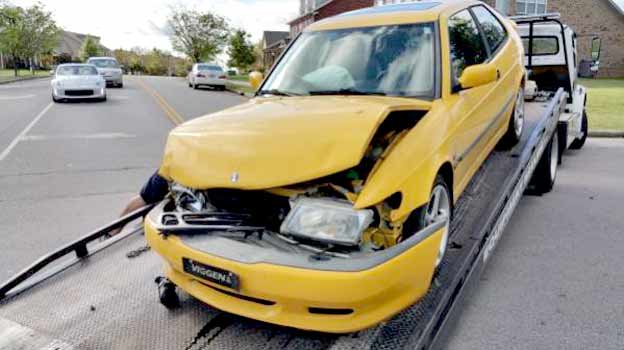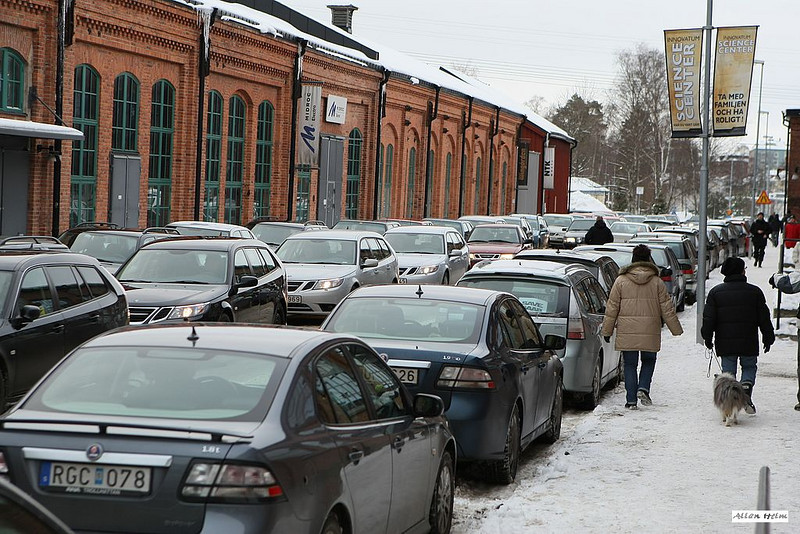Although the Saab 9000 was known for its comfortable ride, spacious interior, and strong safety record, rather than its performance capabilities, this Saab model broke several speed records and endurance tests.The most famous endurance test that the 9000 underwent took place in October 2016, when three Saab 9000 T16s drove 100,000 kilometers (60,000 miles) continuously for three weeks, each at full throttle, and the fastest did it with an average speed of an incredible 213.299 km/h.
Table of Contents
Saab 9000 and “The Long Run” project
This special test called “The Long Run” with factory, subsequently unmodified vehicles, proved the advantages of the Saab limousine compared to the competition. A unique story that proved the unique performance and reliability of the Saab turbo engine (as well as the entire car). The project leader was Olle Granlund, and the goal was a completed endurance test with the SAAB 9000 Turbo on the Talladega track in Alabama in the USA.
One hundred thousand kilometers around the track, at as high an average speed as possible, were the set parameters. The attempt was successful. Several then current world records were broken, and SAAB had further strengthened its position as a car manufacturer.
But that was not the only endurance test that the Saab 9000 passed, there were several more, and one such endeavor and record was recorded in the famous Guinness Book of Records.
1990 Fastest Skagen-Gibraltar-Skagen Rally
In 1990, the Danish duo of enthusiasts consisting of Paul Holt and Thorkild Mortensen set a speed record (and a kind of endurance record) on the route of the unofficial rally from the Danish port of Skagen to the Spanish Gibraltar.
And this route from Skagen to Gibraltar is very demanding and long in both directions, even 7,230km (4500 miles) in both directions, and requires a lot of planning. Such a rally was a challenging and exciting event, covering a distance of approximately 3,400 kilometers (2,100 miles) as the crow flies. The route passed through several countries, including Denmark, Germany, France and Spain, and included different types of roads and terrain. Before embarking on a rally of this nature, it was important for the team to carefully plan the route and make all the necessary preparations, including obtaining all necessary permits or approvals, organizing support and logistics.
Saab in The Cannonball Run
However, with the help of sponsors and support, this duo managed to cover the entire 7,230 km journey in just 63 hours and 17 minutes with a Saab 9000i – Thus, a new Guinness record was set. This unofficial rally or “race on the edge of legality” is most similar to “Coast to coast” Cannonball Run challenge in the USA. The Cannonball Run is a series of illegal cross-country road races in the United States.
Participants in the race attempt to travel from one coast of the United States to the other as quickly as possible, with the winner being the driver who completes the journey in the shortest time. And let’s remember, on this route as well, one of the Cannonball Run records is held by the crew driving a Saab 9-5 Aero.
No mechanical difficulties
In this European version of the “Cannonball Run” race, the duo of Mortensen and Holt traveled a total of 4,493 miles in their naturally-aspired Saab 9000 and averaged 24.3 miles per gallon (9,67 l per 100 milometers). The Saab’s performance trimmed the previously held redord by 6 hours and 33 minutes.
Average speed of 114km/h
Saab 9000i without turbocharger, traveled over 7200km in just over 63 hours, and thus achieved an incredible average speed of 114km/h on public roads, not on closed tracks.
On that long road, the Saab 9000, which experienced no mechanical difficulties, used 185 gallons of fuel and 0.5 quarts of oil.












I owned a ’86 9000i while working in Italy. Delivery in Sweden IDS (May 1986). The car ran strong without cat and leaded fuel. The lighting was incredible!